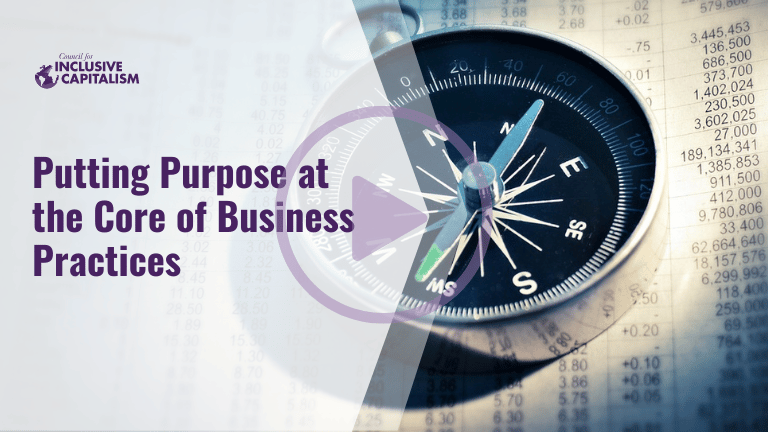Putting Purpose at the Core of Business Practices | Webinar

What is the difference between “purpose” and “ESG”? Are they just two ways of talking about the same thing? And is it really possible — or desirable — to try to measure purpose in practice?
In this webinar from December 8, 2022, featured guests Charles Wookey, former CEO of Blueprint for Business, Melanie Dulbecco, CEO of Torani, and Laila Page, Head of Sustainable Banking, Performance and Frameworks for NatWest Group share pragmatic approaches to centering business practices around purpose for greater action and impact.
Key Takeaways:
What is a good purpose? A good purpose statement is authentic to the business, sets a strategic direction, inspires people, and is practical so that the purpose serves as a blueprint for executive decisions. It creates a gap between the current positioning of a business and the desired future state of the business. When done well, it rallies a company to perform above market and above expectations, to navigate through external challenges (i.e., pandemic, inflation), or through opportunities as the business is growing.
The process. There is no simple blueprint or process for becoming a purpose–led organization or company. Contrary to other business restructuring plans, there is no five–point plan. Becoming a purpose–led business is a choice and a journey where: 1) the quality of relationships with people and planet matters– they are no longer just instrumental to making money; 2) business strategy is driven by the purpose to focus on outcomes: value created for society as well as value capture. The process takes a long time, and the pace of change will vary. Hard system and process changes are crucial as part of the journey along with culture, and narrative.
A balancing act. You can have a good purpose but still have a toxic culture and miss out on releasing your employee’s potential. You can have a stellar culture but lack the business discipline and business performance, in which case you miss out on the business benefit of having this sort of human–centeredness. If you bring them together, you get the benefits of both while reframing the conversation in terms in terms of a business’ contribution to the world, environment, and people.
Leading from within. As leaders, how we behave and enable others to contribute is itself a crucial part of becoming purpose–led. Mid–level leaders also have a responsibility to listen to feedback from the all employees and align everyone in a way to nurture ownership from a bottom–up approach.
About the Inclusive Capitalism Learning Series
The Council for Inclusive Capitalism hosts a series of events to advance learning and adoption of inclusive and sustainable business practices within our community. We provide members with opportunities to connect with fellow members and experts to exchange best practices, share tools and learning resources, and discuss what’s next throughout the year. Business leaders will be invited to share their experiences with a focus not only on the “what” of inclusive capitalism practices, but also the “how to” behind them.



